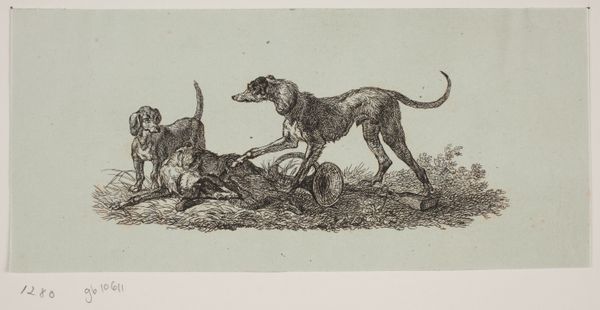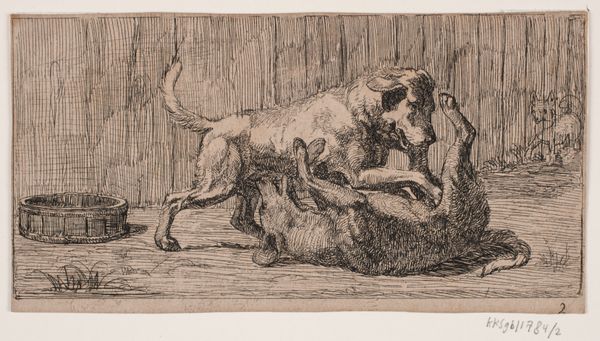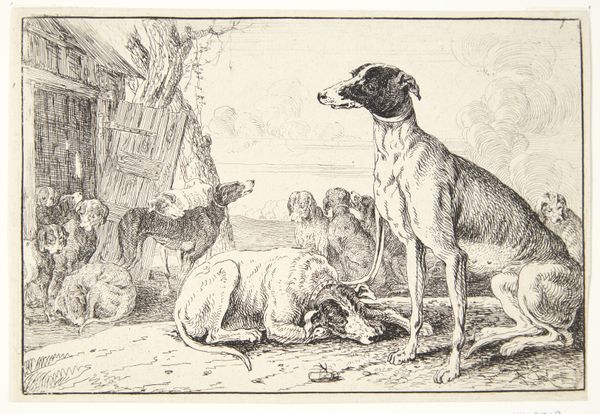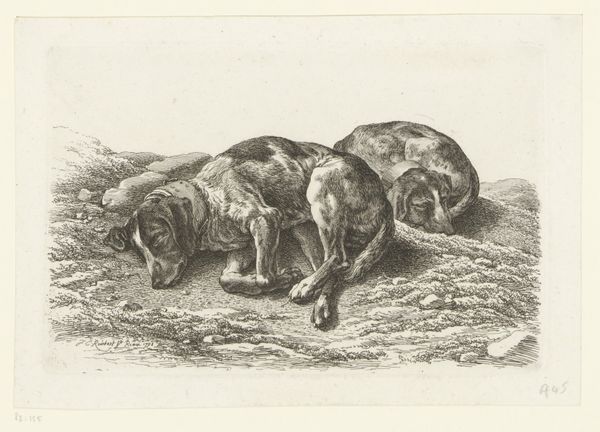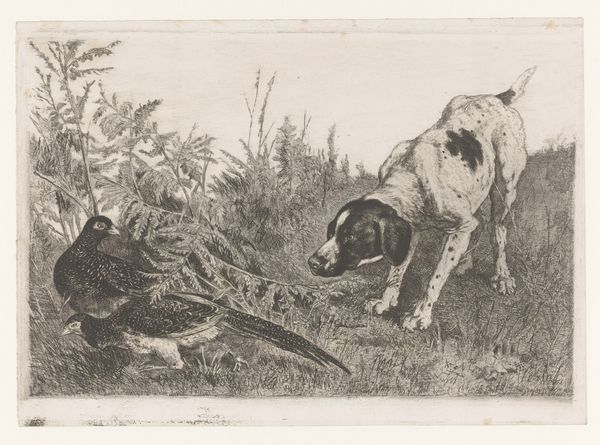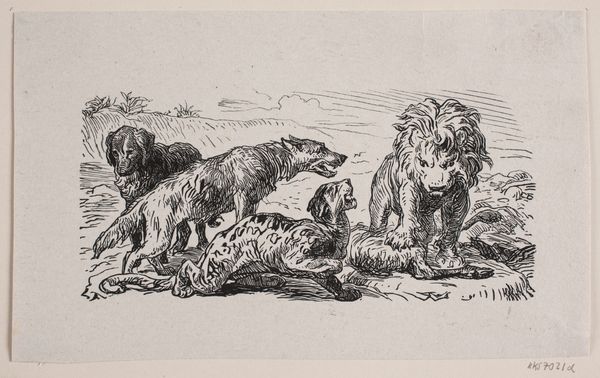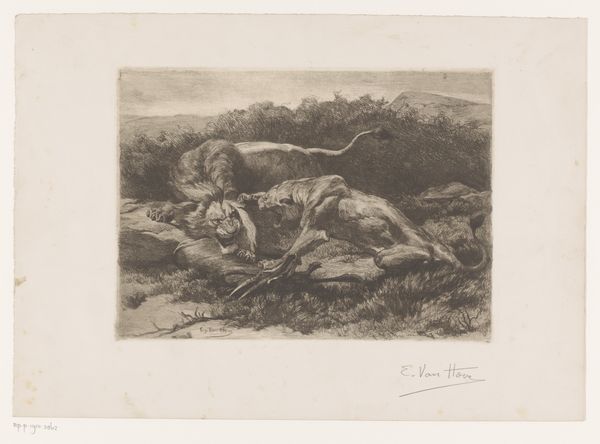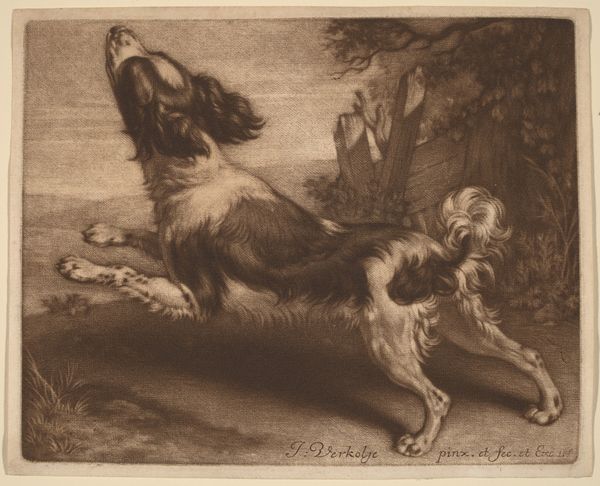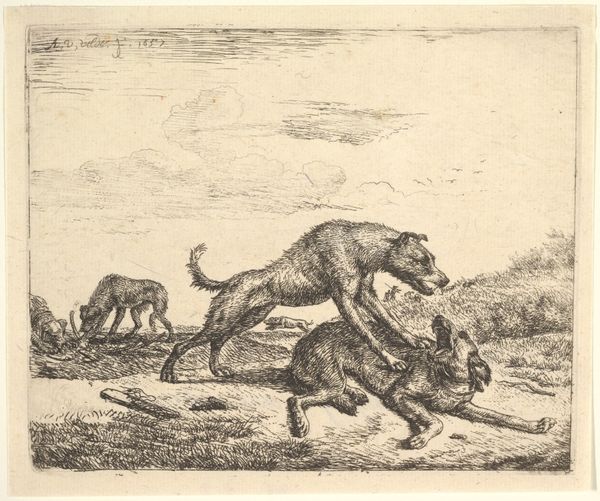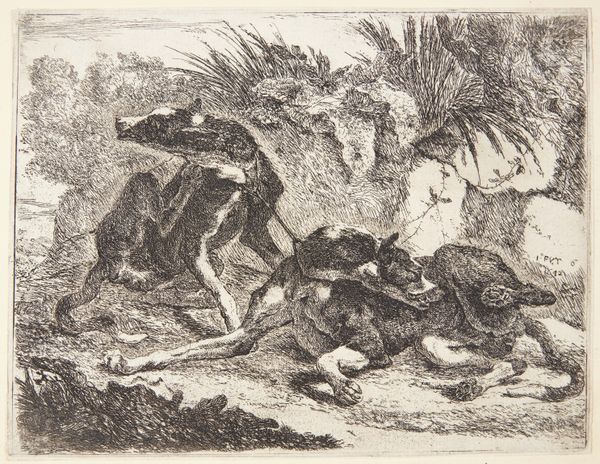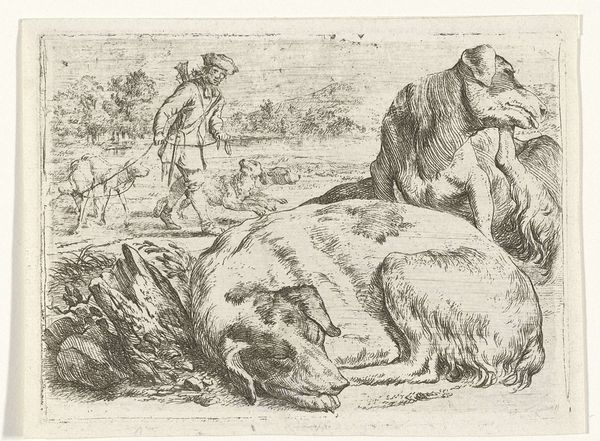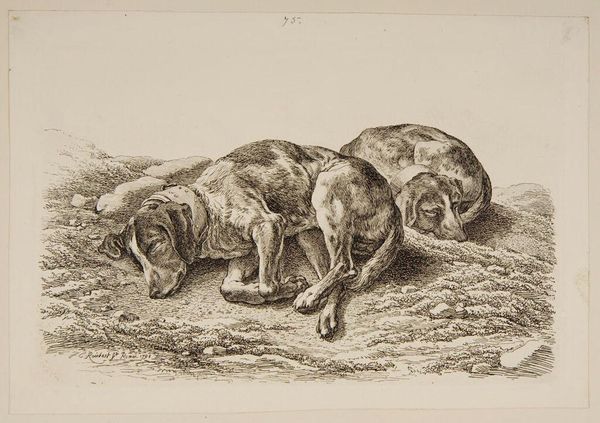
drawing, print, etching
#
drawing
#
ink drawing
#
baroque
# print
#
etching
#
landscape
Dimensions: 167 mm (height) x 221 mm (width) (bladmaal)
Curator: Here we have "To jagthunde," or "Two Hunting Dogs," a 1642 etching by Joannes Fijt, currently residing at the SMK, the National Gallery of Denmark. My initial feeling is one of…weariness, honestly. What stands out to you? Editor: It's all line, isn't it? A remarkable demonstration of etched lines building form and texture. You can practically feel the coarse fur of those dogs through the artist's handling of the acid biting into the metal. It’s a testament to Fijt’s skill with material. Curator: Indeed, but there's a narrative weight embedded in the very nature of the hunting dog, wouldn't you agree? Its loyalty, its training, and here, its utter exhaustion after the hunt. Hunting scenes were enormously popular, obviously demonstrating power and privilege. Dogs occupy a special place. They're not merely pets; they are tools of status, living embodiments of the hunt itself. Editor: It’s more than just an aristocratic symbol, I think. Etching allowed for the relatively quick reproduction of images, making them accessible to a wider, albeit still largely wealthy, audience. These aren't just signifiers of the elite. They are commodities within a developing art market. And let's look closely – there's a real study of canine anatomy and behavior going on here. The rendering of their bodies showcases his interest in, dare I say, the ‘real’ as well. Curator: Consider too the baroque landscape, which sets a visual stage, underscoring the psychological relationship between dogs and their natural surroundings. Note the almost personification of their expressions: the weariness you mention, which touches us as much as the artist's material dexterity. The scene itself echoes deeper cultural anxieties about nature, dominion, and our connection with the animal world. Editor: Perhaps, but for me the proof is always in the process. How was this etching made? What type of mordant did he use? We can speculate endlessly on intended meanings, but a focus on material facts grounds us. To see a glimpse of labor and production of luxury itself is fascinating. Curator: I'm intrigued now to go and consider more directly the relationship between humans and dogs in that period. Perhaps Fijt's work holds even deeper resonance regarding their entwined fates, and human dependence on the animals under their control. Editor: Exactly! Thinking through the materials and distribution reveals a complex negotiation of social, economic and artistic factors that's deeply rewarding.
Comments
No comments
Be the first to comment and join the conversation on the ultimate creative platform.

